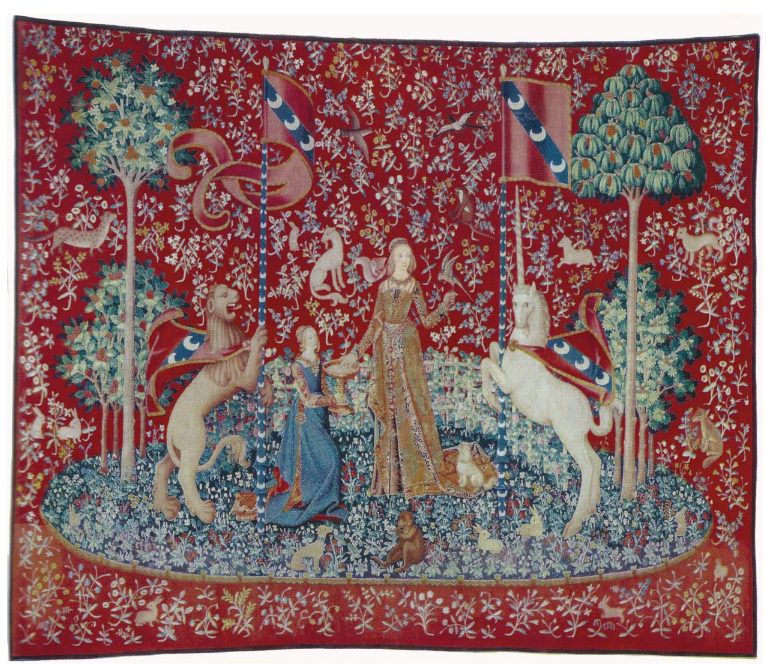How to Catch a Unicorn? Iconography and Armigerous Self-image in the Tapestries Known as “La Dame à la Licorne”
Veröffentlichungsdatum: 11 Okt 2016 12:41
Zitierbare Links:
URN: urn:nbn:de:bvb:355-kuge-485-2
Download:
| PDF Download (3MB) Sprache: English |
Durchschnittliche Beurteilung
Ihre Beurteilung
Kurzfassung
The tapestry-set entitled as “La dame à la licorne”, which is kept by the Musée National du Moyen Âge in Paris, has been interpreted as a Five-Senses-Cycle. This reading produces problems such as the surplus of the “mysterious” sixth tapestry. Attempts to reconstruct the sequence have failed so far. By proposing a reinterpretation as a unicorn catch, a chronological order emerges which also includes the sixth piece as a part of the pictorial plot. “La Vue” actually represents ‘the banishing of the unicorn with a mirror’, an established French iconography during the 14th and 15th century. The paper discusses an illumination of the Wharncliffe Hours by carving out different layers of meaning in relation to the tapestries. The comparison to contemporary images and texts uncovers four key¬-notes. These motifs concern firstly the characteristics of the female protagonist, secondly the unicorn’s preference for music, thirdly the ideal setting for the catch and fourthly the horn’s magic power. According to this re-reading the cycle visualizes the unicorn becoming yielded to the temptations.
Lizenz
Jedermann darf dieses Werk unter den Bedingungen der Creative Commons Namensnennung 3.0 DE Lizenz benutzen.





Rezensionen
Kommentare
Es liegen noch keine Kommentare vor.Möchten Sie Stellung zu diesem Artikel nehmen oder haben Sie Ergänzungen?